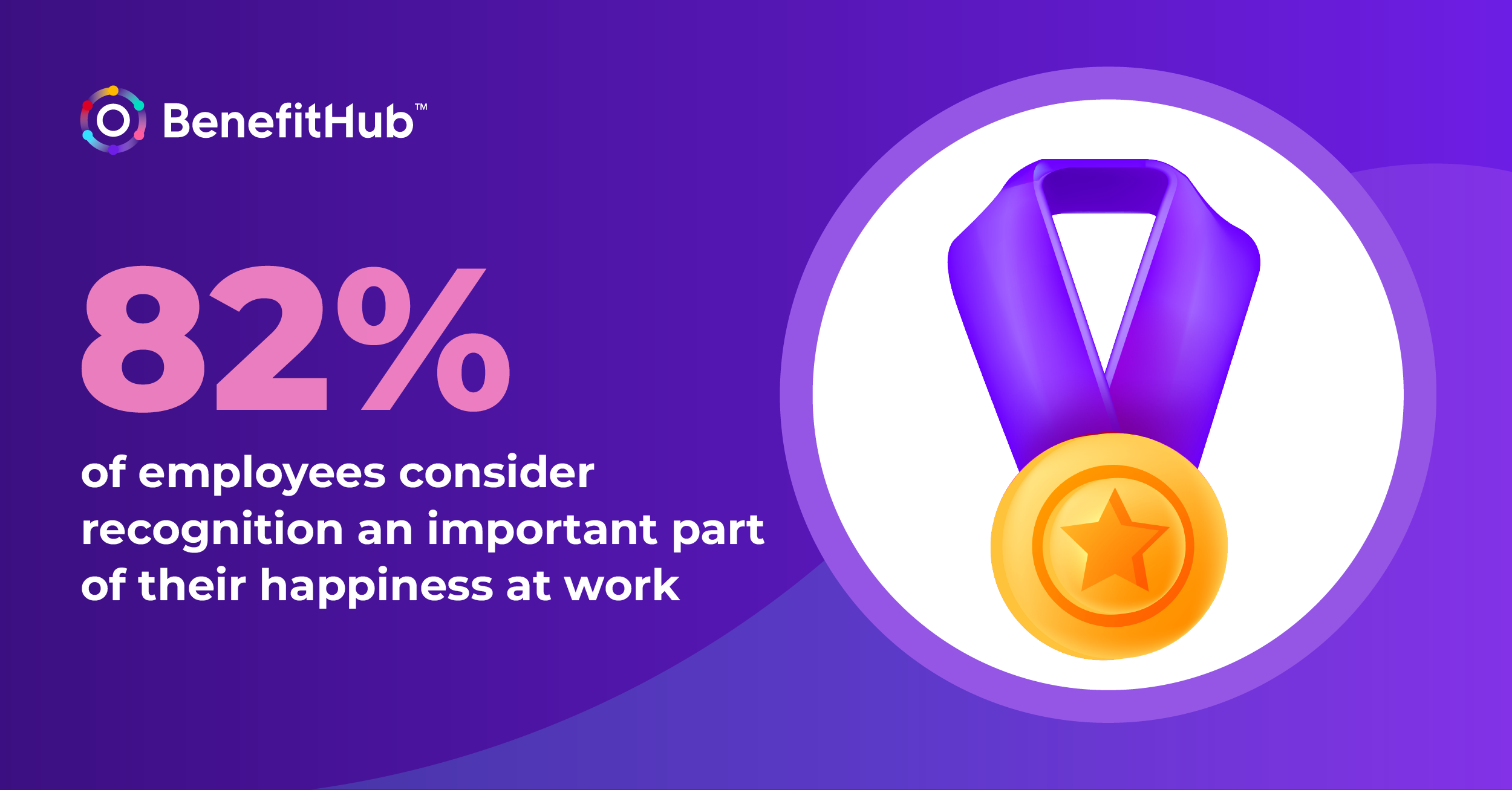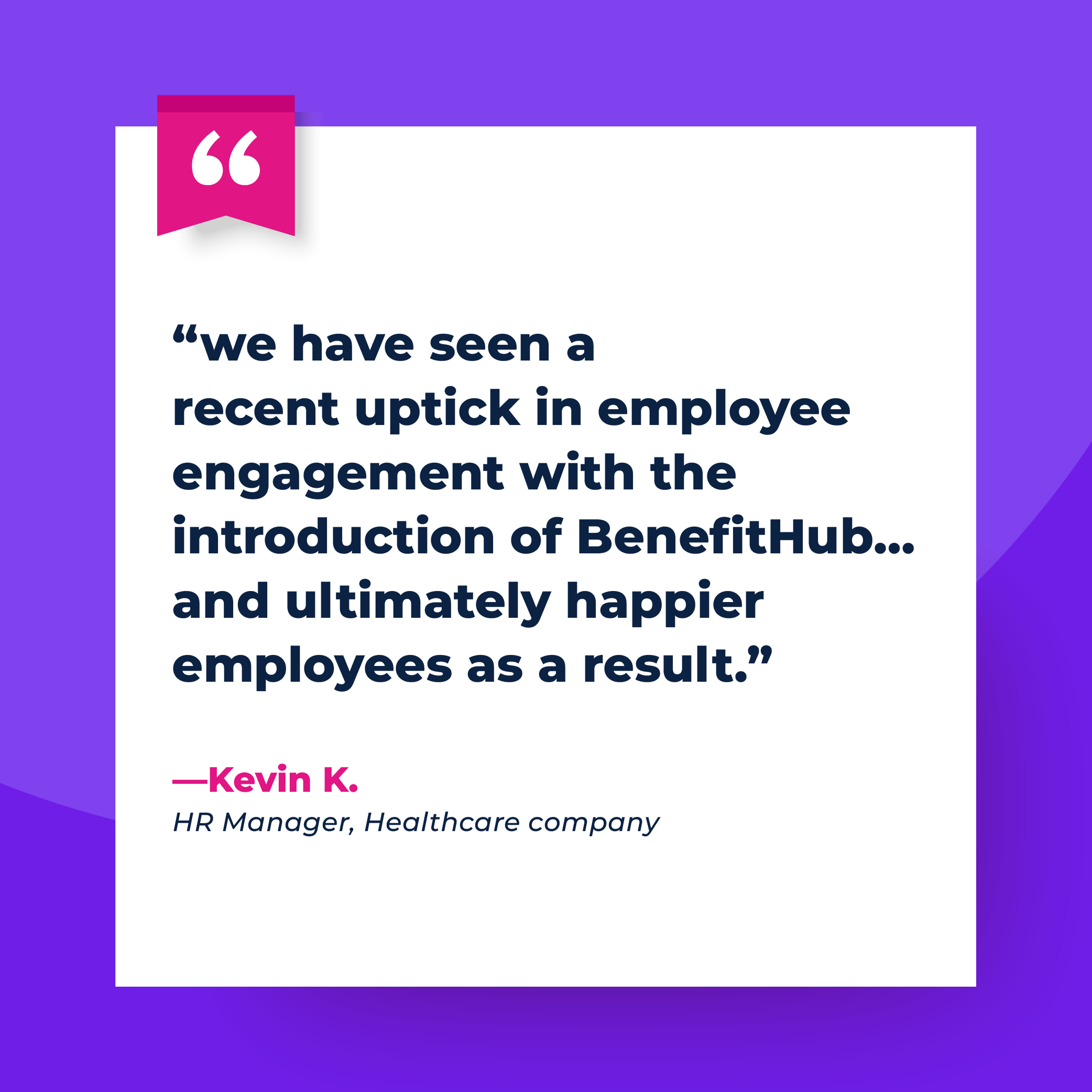Employee recognition and rewards play a crucial role in boosting employee morale and job satisfaction, ultimately leading to improved productivity and retention in the workplace.
Key Takeaways:
Investing in employee happiness has positive implications for both company culture and the business bottom line.
- 82% of employees consider recognition an important part of their happiness at work
- 86% of companies with employee recognition programs reported an increase in employee happiness and job satisfaction
- Strong employee recognition programs can reduce turnover rates by up to 31%
Why Employee Recognition Matters
Most of us have heard the phrase "unsung heroes," but having unsung heroes isn't good for business. Regular employee recognition is essential to cultivating a positive work environment where individuals feel valued and appreciated for their contributions to the overall success of the organization. Plus, it is one relatively low-lift, high-impact way Human Resources (HR) can directly impact employee satisfaction and engagement. Overall, 85% of companies with recognition programs saw a positive impact (1).
By acknowledging and celebrating employee achievements, organizations can boost morale and job satisfaction, leading to higher levels of productivity and employee retention.
Don't just take our word for it. SurveyMonkey interviewed over 1,500 employed Americans about their impressions of recognition at their company, and found that recognition is tied to happiness at work (2). 82% of employees consider recognition an important part of their happiness at work.

The Benefits of Rewarding Employees
Rewarding employees through recognition programs offers numerous benefits for both the employees and the organization. Let's break it down.
Increased Employee Retention
First, successful reward and recognition programs increase employee retention by creating a positive work environment where employees feel valued and appreciated. When employees are recognized for their contributions, they are more likely to feel loyal to their employer and engaged in their work, leading to less job-hopping. According to the Aberdeen Group, strong employee recognition programs reduce turnover rates by 31% (1). Moreover, rewarding employees can help attract top talent to the organization by demonstrating a commitment to employee well-being and growth.
Further, recognition programs contribute to a positive company culture, fostering a sense of camaraderie and teamwork among employees. This highlights the psychological impact of perks—a Gallup report found that 87% of employees believe that having a sense of belonging significantly influences their decision to stay with a company (3).
Employee Satisfaction leads to Higher Productivity
When employees are recognized for their contributions, they are more motivated to perform at their best and go above and beyond, leading to improved employee morale, job satisfaction, higher levels of productivity, and quality of work. A study conducted by the Society for Human Resources Management (SHRM) found that 86% of companies with employee recognition programs reported an increase in employee happiness and job satisfaction (1).
Another SHRM study found that organizations with comprehensive benefits strategies have seen an average productivity increase of 13% and a retention improvement of 40% (3). In today's world, a comprehensive benefits package goes beyond health insurance and PTO—lifestyle and voluntary benefits are a crucial component of a successful recognition program.
Effective employee recognition programs boost retention and productivity, helping businesses reduce the substantial costs associated with recruiting and training new talent caused by high turnover. These programs deliver both tangible ROI and intangible benefits, making them a valuable investment for any organization. In short, employee recognition programs are good for business.
Implementing Effective Recognition and Engagement Programs
To implement effective recognition programs, HR employees should consider the following strategies:
- Clearly define the criteria for recognition to ensure fairness and transparency.
- Provide a variety of recognition options to cater to different employee preferences and needs.
- Ensure that recognition is timely and consistent, so employees feel valued in real-time.
- Involve employees in the recognition process by allowing them to nominate their peers for exceptional performance.
- Regularly communicate the importance of recognition and rewards to all employees.
- Continuously evaluate and assess the impact of recognition programs to make necessary improvements.
- Consider both financial and non-financial ways to recognize employees.
- Provide opportunities for regular feedback.
By following these strategies, HR employees can create a robust recognition program that motivates and engages employees.
One example of a successful implementation comes from Yelp. Through taking three simple steps, they saw average employee tenure increase from 2.8 years in 2022 to four years in 2024 (4). These three steps included listening to employee feedback, implementing flexible work policies, and focusing on career development.
The feedback comes from employees via an annual engagement survey, as well as from focus groups, meetings, and other sources. According to HR Brew, "This feedback has influenced much of Yelp’s HR strategy, including its flexible work model, leadership development programs, and benefits offerings—such as its wellness reimbursement benefit, which can be used for gym memberships, massages, running gear, or other health and wellness purposes" (3).
Creative Ideas for Employee Recognition
There are various employee recognition ideas that HR employees can explore, from instituting an Employee of the Month/Quarter/Year awards, to publicly recognizing achievements during team meetings, and even offering incentives like extra time off or opportunities for professional development. Take it a step further by organizing team-building activities or social events to celebrate accomplishments. No matter the direction you pursue, keep it personalized, appreciative, and celebratory to foster a positive work environment.
Of course, financial perks are one of the most sought-after rewards. A recent study conducted by Glassdoor found that 57% of job seekers prioritize salary over non-monetary benefits when considering employment opportunities (3). However, that still leaves plenty of opportunities for teams with limited budget. For example, consider adopting a discount marketplace for your employees that helps them save on everyday spending.
This is an example of a tool that can directly assist with recognition efforts. Consider providing a benefits portal like BenefitHub, which offers an employee discount program and rewards solution. A comprehensive benefits solution goes hand-in-hand with employee satisfaction, and voluntary benefits and work perks are just the beginning.

Measuring the Impact of Recognition and Rewards
Measuring the impact of recognition and rewards programs is crucial to ensure their effectiveness and make data-driven improvements.
HR employees can use various metrics to evaluate the impact, including employee satisfaction surveys to assess the impact on overall job satisfaction, employee feedback to understand how recognition programs are perceived by employees, and productivity metrics such as employee performance and output, to measure the influence of recognition on productivity. Also keep an eye on overall employee retention rates to determine whether recognition programs contribute to increased retention.
By regularly measuring and analyzing these metrics, HR employees can identify areas for improvement and optimize their recognition and rewards programs.
The BenefitHub portal has measurability as a key feature of our solution, where you can track employee engagement. Learn more here.
How BenefitHub Can Help
Employee recognition and rewards programs are one of the easiest and most effective ways that HR can boost employee morale, productivity, engagement, and retention without large overhead costs. 82% of employees consider recognition an important part of their happiness at work—and happiness at work is what BenefitHub wants to help companies strive for. With BenefitHub, organizations can launch a rewards program, offer discounts and work perks, and show employees they are cared for. Learn more about BenefitHub, or contact us today.
Sources:
(1): SelectSoftware Reviews, "50 Employee Recognition Statistics."
(2): SurveyMonkey, "Can employee recognition help you keep them longer?"
(3): How do benefits and perks impact employee satisfaction in today's workforce?
(4): Yelp increased employee tenure by over a year after taking these three steps

